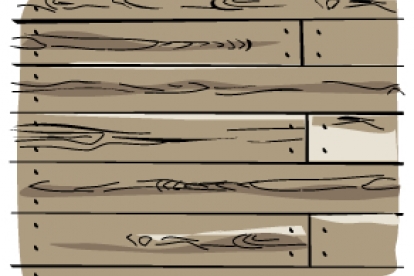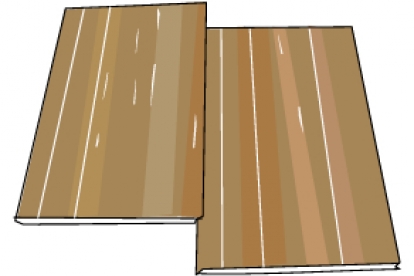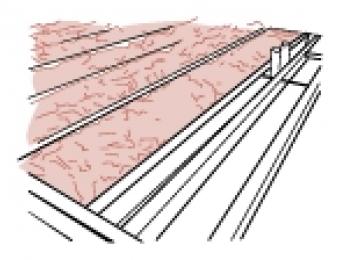
Floorboards provide a classic, natural look designed to showcase the wood grain creating a warm glow in a home. Both domestic and exotic wood species can be used for the boards - each type of wood has unique properties that will need to be catered for. Different cuts will display different angles of the wood grain, and there are a variety of finishes which can be applied which each highlight the wood in diverse ways.
Boards will also vary in colour and features from tree to tree, even within the same species. Light and creamy wood colours can be found in woods like maple and birch and will give a relaxed vibe to the room. For a more formal look, try the deeper red tones of jarrah or mahogany.
Boards also vary in width - strip flooring is the narrower type, and is what most people think of when imagining floorboards. Plank boards are wider and appear more casual.
Floorboards are a rigid surface, but are more forgiving than tiles or concrete in terms of bounce. They provide good insulation if sealed correctly, though they can be draughty if gaps appear. Sound will carry, particularly footsteps unless muffled by a rug.

What should I look for when choosing floorboards?
The choice is largely an aesthetic one, but the hardness and quality of the wood need to be considered too.
The hardness of various wood types is compared on what's known as the Janka scale. The rating measures the force needed to drive a steel ball until it’s half showing out of the wood. This is used to indicate how susceptible the wood is to indentation and scuffing, as well as resistance to sawing and nailing. The higher the Janka rating, the harder the wood. Harder woods are more resistant to stains as they have less open pores.
The quality of the wood is assessed by how featured it is; there are three grades: select, standard and character. Select timber has the least variation between boards in terms of colour and features, providing a uniform look. Character grade retains the natural appeal of the wood by showing all the markings like knots and branch markings. Standard boards have characteristics of both, and offer a middle ground.
How are floorboards installed?
Most floorboards are manufactured to a tongue and groove style, to allow easy fitting. Once in place, the boards are nailed to the joists or glued in place. Then, they are alternately sanded and coated with finish until the floor is perfectly smooth and dry. Some floorboards are prefinished, meaning they don't need to be separately sanded and dried, which can save a lot of time and effort.
Suitability and maintenance
Wooden floorboards can be used throughout the house with the exception of the bathroom. Unless the wood is specially waterproofed and sealed, wood will allow moisture to seep through the cracks, causing swelling and buckling.
Wood floors can be swept and mopped, provided the water is hot. A light detergent may be used. Avoid abrasive cleaners as they will strip the finish off your boards. Wood floors can also be waxed and polished to bring up a high shine and revitalise your floor. After many years, you may wish to have the floors re-sanded and refinished to open up the wood again.
|
Advantages
|
Disadvantages
|





